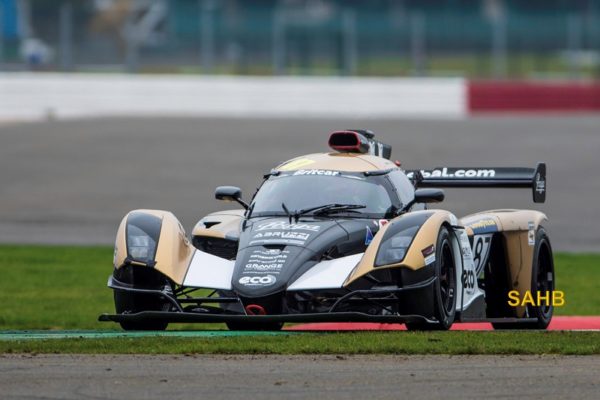
Surely some mistake? Praga were a Czech car and truck manufacturer before World War II. They don’t make racing cars in 2021, do they?
Oh yes they do. The example in our Snapshot was seen at Silverstone in November 2021 at a track day. The R1 also has its own one-make series, and the R1R, the road-going version, is powered by the same engine, transmission, brakes, clutch, and chassis, but is slightly smaller and has a few other differences to make it road-legal. The R1R is Praga’s first road car since 1947, but sadly it is only a prototype as yet.
The racing R1 specification is rather different from the cars we usually feature in our Snapshots: the monocoque is entirely in carbon fibre; dry weight is 643kg (1418lb); the 1998cc four-cylinder engine with 4 valves per cylinder produces 365bhp at 6900 rpm – but the engine life is quoted as 4500km (2796 miles) before rebuilding. Oh, the joys of running a true racing car!
Now some history. Praga was founded in 1907 to build motor cars, as a venture between entrepreneur František Ringhoffer and the company Prvni Českomoravská továrna na stroje (“First Bohemian-Moravian Machine Works”). Ringhoffer left after only one year, and in 1909 the company adopted the name Praga (the Latin name for Prague). An early Praga car was built under licence from Isotta Fraschini.
Few vehicles were built until the arrival in in 1911 of František Kec. He designed and managed the production of ‘cartrains’ (in modern parlance, double semi-trailers) for the military, and thus established the company’s reputation. He then created a series of conventional but well-built 4-cylinder cars, with the unwritten rule that every new model had to receive at least half of its parts from an earlier model. The 1911 Mignon of 1846cc, the 1912 3824cc Grand and the 1913 ‘People’s car’ the Alfa consolidated the success of the company. Car production gave way to trucks during World War I, but with the creation of Czechoslovakia in 1918 Praga not only resumed car making but entered and won many reliability trials and other sporting events. The 1924 Piccolo was a small 707cc car that grew in size and engine capacity over twenty series until the 1934 995cc version.
In 1927 Praga merged with ČKD, one of Czechoslovakia’s largest engineering companies, and added motorcycles and tractors to their production. 1929 was a peak production year, with 7500 vehicles made. But the world economic crisis hit Praga hard, and production declined. More models were introduced, including the Super Piccolo and finally, in 1935, the 1600cc Lady, produced in saloon and roadster form. After turning to military truck manufacture for the invading German Wermacht during World War II, the Praga factory was largely destroyed by air raids in 1945. The rebuilt factory, nationalised in October 1945, resumed truck and bus construction. A few passenger cars (only the mid-sized Lady) were also manufactured until 1947, for use by government officials. A brief period in British ownership ended with the revival of the company after 2011 as a maker of high-performance sports racing cars.
Praga made many models in their long and illustrious history – pictures of which you can enjoy by clicking on this link to the present-day company: https://pragaglobal.com/praga-history/
They are certainly proud of their heritage – and rightly so.
Photo and initial research courtesy of Peter McFadyen. See his website: http://petermcfadyen.co.uk







Leave a Comment